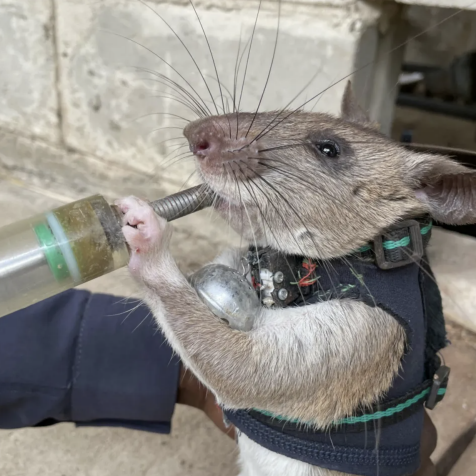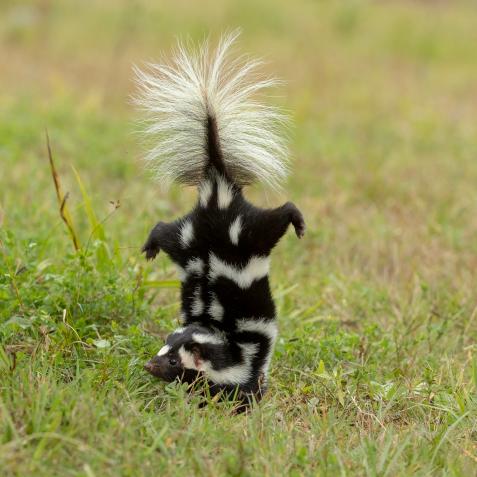
GettyImages/Science Photo Library - MARK GARLICK
9 of the Weirdest Types of Planets in Our Galaxy
It seems like every time astronomers discover a new exoplanet, it comes with a weird new label: It's a hot Jupiter! An ice giant! A circumbinary super-Earth in the Goldilocks zone! If you think these names are weird, buckle up: The worlds themselves are even weirder. Here are nine of the most bizarre types of planets we know about.
Planets With Weird Sizes
Hot Neptune
Hot Neptunes are objects the size of Neptune that orbit close to their home star. In the landscape of exoplanets, they've been strangely rare. They're less common than hot Jupiters, which are Jupiter-sized objects close to their home star, and they're also less common than super-Earths, which are planets more massive than Earth, but less massive than Neptune. In December, astronomers realized that this might be because their close proximity to their home stars cause hot Neptunes to burn off their atmospheres at a rapid pace — which eventually turns them into a type of super-Earth known as a Chthonian planet (described below).
One we know about: GJ 436b, a hot Neptune that orbits the red dwarf Gliese 436, 10.2 parsecs from Earth.
Gas Dwarf
While rocky planets are small and solid, and gas giants are huge and gaseous, gas dwarfs fall somewhere in the middle. They have thick atmospheres like their big gaseous cousins, but they're around two to four times the size of Earth (compare that to Jupiter, which is more than 11 times the size of Earth).
One we know about: Possibly Kepler 138b, an exoplanet with the same mass as Earth but with a 60 percent larger radius, which means that it's potentially gaseous.
Chthonian Planet
When a hot Neptune (or a hot Jupiter, or a hot Uranus) flies too close to the sun, it often starts to lose its atmosphere. Get close enough — 2 percent of Earth's distance from the sun, say — and its atmosphere could disappear completely, leaving just a huge rocky core behind. That's what you call a Chthonian planet, named for the Greek word "khthonios," which refers to the Greek deities of the underworld. Fitting, since the underworld of these planets is exposed.
One we know about: CoRoT-7b, a rocky planet seven times the size of Earth and nearly five times its mass that orbits 60 times closer to its star than Earth does to the sun. Astronomers think it was once a gas giant the size of Saturn.
Planets With Weird Compositions
Iron Planet
Earth is made up of an iron-rich core surrounded by a silicate-rich mantle, which is why it's sometimes referred to as a silicate planet. An iron planet is like that, but with much less or perhaps zero silicate — it's mostly just the iron core. Iron planets we've found have incredibly high densities, which would give them a hefty gravitational pull for their size.
One we know about: Aside from, you know, Mercury, there's Kepler-10b, which was the first confirmed rocky planet to be discovered outside our solar system. It's believed to be mostly iron with little to no atmosphere. It has nearly five times Earth's mass but is only 40 percent larger, so it's incredibly dense. It also orbits its home star in only 20 hours at a distance 20 times closer than Mercury is to the sun.
Carbon Planet
When it comes to outer space, the discovery of carbon is usually pretty exciting; it's a "building block of life," as they say. But despite the richness of life on Earth, carbon only makes up 0.1 percent of our planet. In fact, a little goes a long way; if a planet were to be made up of mostly carbon, a lack of life would almost be guaranteed. That's because carbon gobbles up oxygen to create carbon monoxide, and that would leave little oxygen to form water. If that's disappointing, maybe this will cheer you up: The pressure beneath a carbon planet's graphite surface would likely form a thick layer of pure diamond.
One we know about: While carbon planets are still technically theoretical, the discovery of 55 Cancri e in 2012 put them further into the realm of possibility. This planet 40 light years from Earth was believed to be made of mostly diamond, although further research revealed that it might not have as much carbon as we thought.
Superpuff
This is another type of planet that poses a mystery. Generally, rocky planets are low-mass and gas planets are high-mass. Superpuffs, on the other hand, are gas planets with only two to six times the mass of Earth — but with gaseous atmospheres that puff them out so they're four to 10 times its size (so in the range of Neptune and Saturn, which are 17 times and 95 times the mass of Earth, respectively). Astronomers think they accomplish this by gathering all that gas far out in the protoplanetary disk — the planetary nursery around a star that eventually gives birth to a solar system — where it's cold, and that lets them collect that gas faster than they would further in.
One we know about: The exoplanets Kepler 51-b and 51-d are both superpuffs that orbit Kepler 51, a whippersnapper of a star that's only 500 million years old. These two planets are each about the size of a gas giant, but with only 10 times the mass of Earth.
Planets in Weird Places
Pulsar Planet
If you're a planet, a pulsar is not a great place to be. A pulsar is a rapidly rotating neutron star, which itself is the super-dense core of what was once a massive star that exploded in a supernova. Any planets around a pulsar would have either had to be there before the supernova (which is unlikely, since a star massive enough to become a neutron star probably wouldn't have formed planets), or formed afterward (which could happen in a few ways, but most of them are also unlikely). As a result, less than one percent of pulsars have been found to host planets. Yet a pulsar is exactly where we found our first ever exoplanet. Weird, right?
One we know about: PSR1257+12c and PSR1257+12d, the first exoplanets humans ever discovered way back in 1992. They orbit a pulsar in the Virgo constellation that's about 2,300 light-years away — definitely no weekend trip.
Double Planet
When planets form, they collect all the stuff in their surrounding area. If another planet forms nearby, it'll either move away from the first planet or crash into it and combine. But there's a rarer, third option: They remain as two planets that orbit each other. That's what you might call a double, or binary planet.
One we know about: While some have proposed defining Pluto and Charon as a double planet (or even Earth and the moon), the unofficial rule is that a double planet needs to include two bodies the size of planets. We haven't actually found any yet — but astronomers think it's possible.
Rogue Planet
There's a good chance that every planet you've ever heard about orbits a star. But get this: it's estimated that in our galaxy alone, there are at least 400 billion rogue planets, or planets that don't orbit any star. Of course, since we generally detect planets by tracking the dimming of their home star as they pass in front of it, rogue planets have been tough to detect — but from the ones we have detected, scientists reckon that they might outnumber stars 2 to 1.
One we know about: SIMP J01365663+0933473 is a behemoth of a rogue planet that was discovered last year. At 1.22 times the size of Jupiter and nearly 13 times its mass, this planet was first identified as a brown dwarf, or failed star, but further research found that it wasn't quite massive enough. Therefore, it's a planet — albeit one that's right at the border between planet and star.
This article first appeared on Curiosity.com.


















